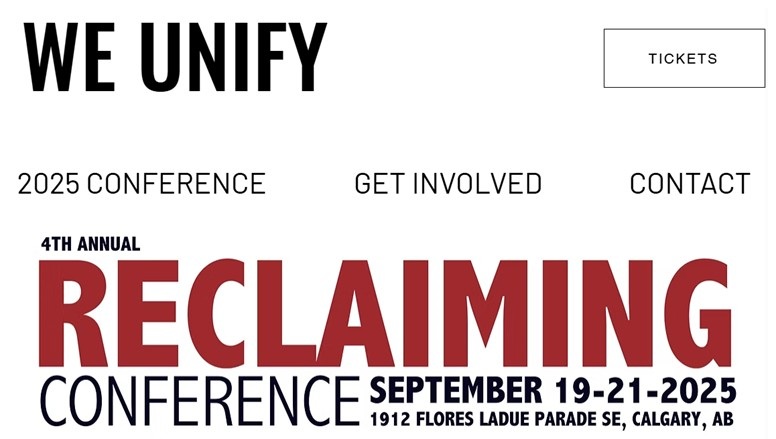|
Coddled, Crippled, Ready to Lead |
DIRECTORY | ||
|
Contributions: Justa Chat. COVID Mandate - Mindful Neglect. |
Action: Help sustain KEI's contributions |
Fact or Fiction?
AI Is Dehumanizing |
|
|
Editor - Perry Kinkaide |
Canadian youth have been labeled fragile—overprotected, under-challenged, and sidelined by well-meaning systems. But a new narrative is emerging: one of self-leadership, resilience, and renewal. In this issue, we explore how learning has been impeded, resilience devalued, and unity diluted—but also how today’s youth are reclaiming challenge and stepping up as a new force for Canada’s resurgence. This - the second episode of our series "Youth At the Crossroads" explores with the help of our Youth Advisory how young Canadians are shifting from managed dependents to national leaders—and what it means for our future. - Editor |
||
|
Canada’s Youth – Coddled, Crippled, and Ready to Lead. From Recovery to Responsibility: The Youth-Led Resurgence of a Nation
By now, we’ve all heard the calls for greater mental health support and post-pandemic recovery. But what if the deeper crisis facing Canada’s youth isn’t rooted in COVID-19, but in a longer-standing pattern of overprotection? From padded playgrounds to perpetual praise, young Canadians have been raised in a culture that prioritizes emotional safety over resilience. In shielding them from harm, we’ve often deprived them of the very tools they need to thrive: independence, confidence, and the ability to navigate life’s inevitable discomforts.
Today, Canadian teens report some of the highest rates of anxiety and depression in the OECD. A 2025 Children study found that nearly 50% of adolescents in Canada exhibit symptoms of anxiety or emotional disengagement, with 36% experiencing depression severe enough to interfere with daily life (Children, Springer, 2025). These figures cannot be blamed on the pandemic alone—they reflect a generation unpracticed in coping with everyday adversity. Despite generous public investment in education, nearly 20% of high school graduates in Canada lack basic literacy and numeracy skills needed for post-secondary success or employment (CMEC, 2024). At the same time, many young Canadians describe themselves as “burned out” before ever entering the workforce. Continued below
https://us02web.zoom.us/j/84258596166?pw.. The KEI Network Youth Advisory Panel
Continued from above. This is the paradox of the overprotected generation: raised with good intentions, but denied formative experiences—failure, risk-taking, unstructured play—that develop real-world competence. In this version of childhood, friction is mistaken for failure, and adversity is viewed as injustice. Psychologists Jonathan Haidt and Greg Lukianoff describe this as a “failure of anti-fragility.” Humans grow stronger through manageable stress. Remove those stressors, and we remove the opportunity to grow.
In schools, “zero tolerance” policies discourage initiative. In universities, trigger warnings and safe spaces, while well-meaning, sometimes shield students from the healthy discomfort required for intellectual growth. At home, constant monitoring and digital surveillance send a quiet message: you can’t be trusted. The result? A generation unready for adulthood. According to a 2025 Statistics Canada Labour Force Survey, only 57% of Canadians aged 20–24 are employed full-time. Among NEET youth (not in employment, education, or training), the majority cite lack of direction or self-confidence as their biggest barriers (Statistics Canada, Q1 2025).
This is not a youth problem—it’s a system failure. In the name of compassion, we’ve cultivated dependence. We’ve confused control with care. And we’ve undervalued the central pillar of Canadian identity: resilience.
We see it in our national story—from frozen ponds and hockey fights to cadet corps and rugged terrain. Canadians take pride in enduring the elements, starting early, and bouncing back. Yet today’s young Canadians, raised amid constant supervision and softened standards, are increasingly anxious, isolated, and unready for challenge.
This shift has roots in a cultural rebalancing. In an effort to promote emotional wellbeing, our institutions have deprioritized risk, discipline, and competitive achievement—hallmarks of traditional (and not exclusively male) resilience. The feminization of youth development—not in the empowerment of women, which is vital, but in the over-correction toward consensus and emotional fragility—has dulled the ambition of both young women and men.
Girls are now reporting record levels of perfectionism and emotional burnout, while boys are falling behind in motivation and academic engagement. Team sport participation—once a key builder of discipline, cooperation, and self-confidence—has dropped 13% since 2010, with girls abandoning it at nearly twice the rate of boys by age 14 (Statistics Canada, Youth Sport Participation Survey, 2024). We have discouraged failure rather than normalizing it. We’ve rewarded vulnerability over perseverance. And we’ve allowed multiculturalism—a national strength—to sometimes deepen social silos at the expense of unity. If we are to face shared national challenges—economic, technological, civic—we need a generation that leads together, not one fragmented by identity and grievance. But there is hope—and it lies in the youth themselves.
From Victims to Leaders: The Youth-Led Resurgence. While many institutions debated how to protect young people, others rose on their own terms. Across Canada, youth are starting projects, organizing campaigns, launching businesses, and challenging entrenched narratives. They’re learning that leadership doesn’t come from rescue—it comes from responsibility. The 2025 Children study also found that adolescents who engaged in volunteering, team leadership, or physical challenge showed significantly greater resilience and life satisfaction than peers who did not. The difference? They acted. They initiated. They led.
As one young woman said during a discussion with KEI: “We were raised like porcelain, but we’re not breakable. We just needed the space to test our strength.”
Five Self-Leadership Principles for Canada’s Next Generation 1. Learn Actively, Not Passively. Don’t wait for permission. Read beyond the curriculum. Build something. Break something. Reflect and start again. Learning is earned, not delivered. 2. Redefine Resilience. Resilience isn’t the absence of emotion—it’s forward motion through adversity. Accept discomfort as a teacher. Practice persistence, not perfection. 3. Refuse the Victim Label. Being underestimated does not define you—it refines you. Don’t allow past hardship to become your ceiling. Use it as your foundation. 4. Lead Before You’re Asked. Leadership begins in daily choices. Mentor someone younger. Solve a local problem. Take responsibility without waiting for recognition. 5. Unite Across Difference. Whether you are Indigenous or immigrant, rural or urban, third-generation Canadian or newcomer—lead together. Canada’s renewal depends on shared purpose, not division.
The Stakes Are National. If this generation does not lead, Canada will continue to drift—fragmented, fragile, and stalled. But if today’s youth reclaim challenge, accountability, and unity, they can ignite a cultural and civic renewal long overdue. Let’s stop defining youth by what they’ve lost—and start celebrating what they’re building.
Let’s stop managing them as problems—and start empowering them as partners. Let’s stop asking when they’ll grow up—and recognize that many already have. References • Children, Springer (2025). “Adolescents’ Mental Health and Resilience in Canada.” • Council of Ministers of Education, Canada (CMEC). “Pan-Canadian Assessment Report,” 2024. • Statistics Canada. Youth Sport Participation Survey, 2024. • Statistics Canada. Labour Force Survey, Q1 2025. • Haidt, J., & Lukianoff, G. (2018). The Coddling of the American Mind. New York: Penguin Press.
|




 No need to register. Just Zoom in ..
No need to register. Just Zoom in ..


